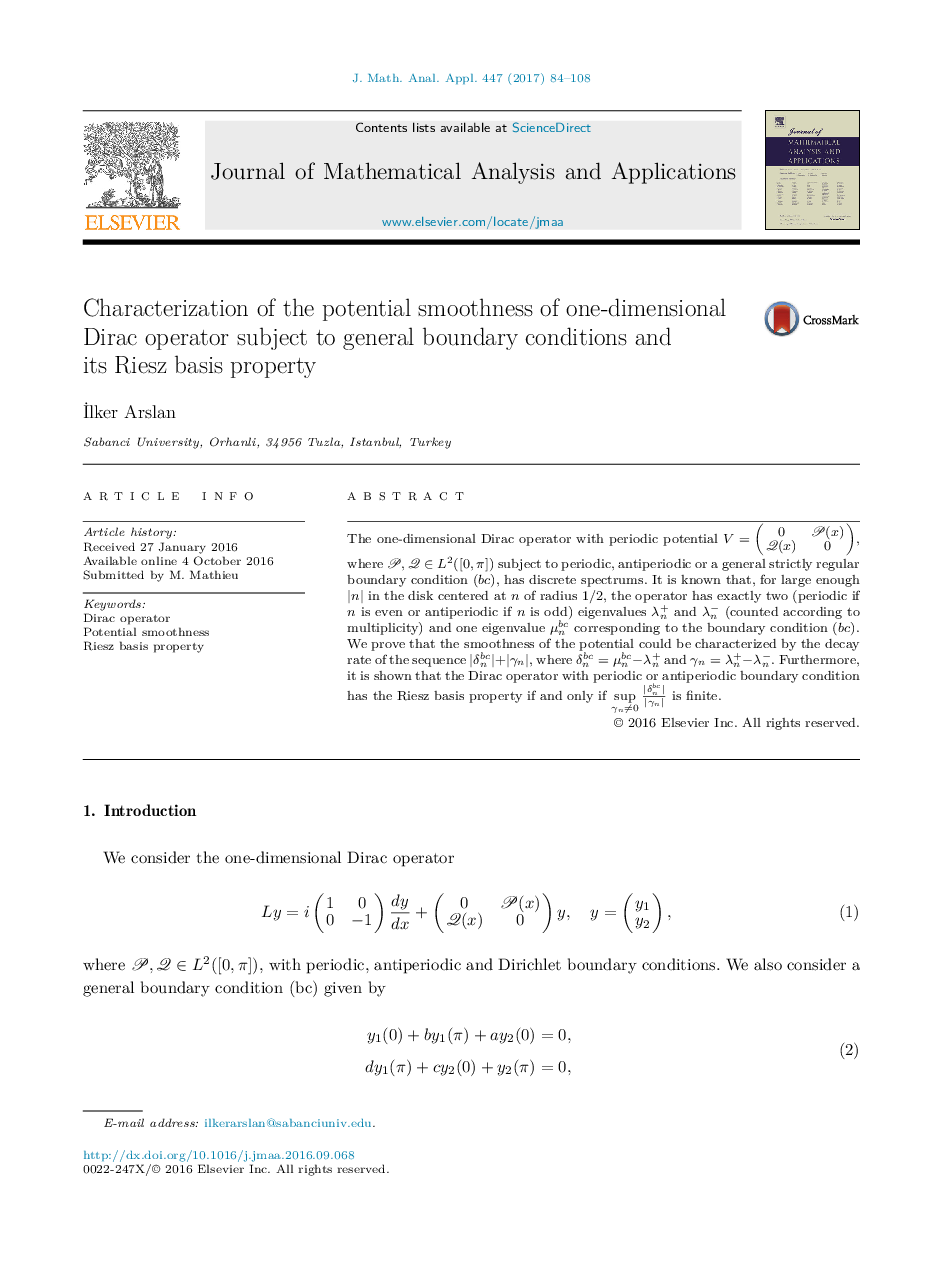| Article ID | Journal | Published Year | Pages | File Type |
|---|---|---|---|---|
| 4613727 | Journal of Mathematical Analysis and Applications | 2017 | 25 Pages |
The one-dimensional Dirac operator with periodic potential V=(0P(x)Q(x)0), where P,Q∈L2([0,π])P,Q∈L2([0,π]) subject to periodic, antiperiodic or a general strictly regular boundary condition (bc ), has discrete spectrums. It is known that, for large enough |n||n| in the disk centered at n of radius 1/2, the operator has exactly two (periodic if n is even or antiperiodic if n is odd) eigenvalues λn+ and λn− (counted according to multiplicity) and one eigenvalue μnbc corresponding to the boundary condition (bc)(bc). We prove that the smoothness of the potential could be characterized by the decay rate of the sequence |δnbc|+|γn|, where δnbc=μnbc−λn+ and γn=λn+−λn−. Furthermore, it is shown that the Dirac operator with periodic or antiperiodic boundary condition has the Riesz basis property if and only if supγn≠0|δnbc||γn| is finite.
